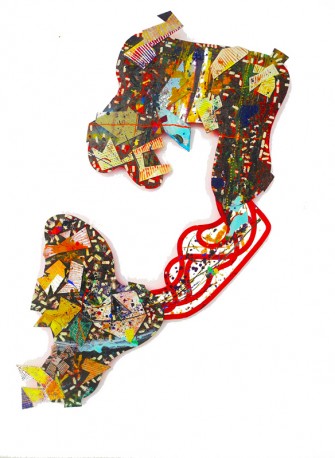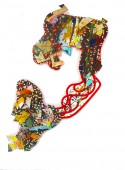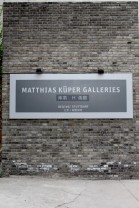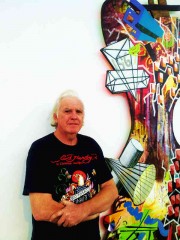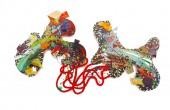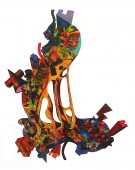中国舞1
(平台服务时间:周一到周五 9:00-17:00)
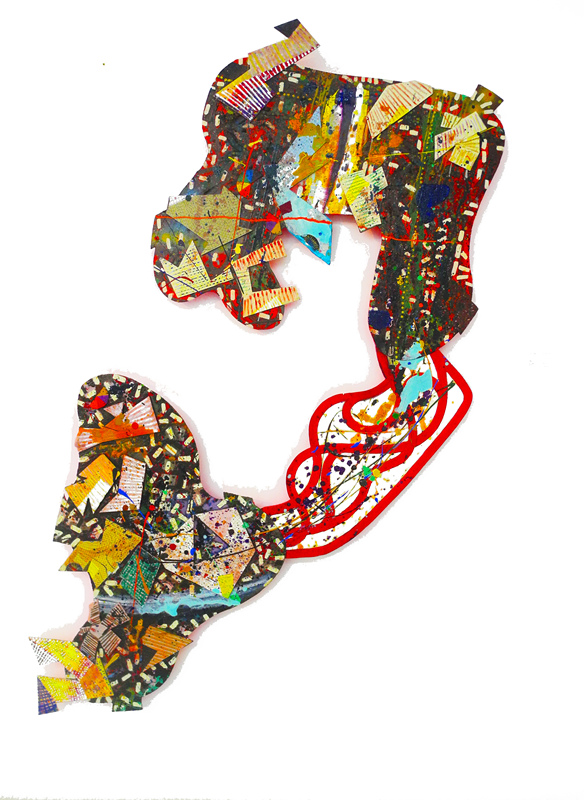
- 资质:
- 评分:
1分 2分 3分 4分 5分 6分 7分 8分 9分 10分 10分
- 印象:
- 经营时间:14年
- 展厅面积:360平米
- 地 区:北京-朝阳
| 尺寸 | 246x154(cm) | 创作年代 | 2014年 | ||
|---|---|---|---|---|---|
| 作品分类 | 综合材料 | 材质 | 其它 | 题材 | 其它 |
| 作品标签 | |||||
| 适用空间 | |||||
作者介绍
BRIEF BIOGRAPHY
Since graduating from England’s Bath Academy of Art in 1976 where he was taught by the modern masters Frank Auerbach and Howard Hodgkin Michael Downs has exhibited his striking and unusual shaped paintings in over 30 solo shows and 200 group shows in twenty countries around the world, including the Pompidou Centre, Paris, the Centro de Cultura Contemporanea, Barcelona, the Barbican Centre, London and the Osaka Triennale of Painting in Japan He has been an artist in residence in many countries and many diverse environments and has also been a visiting lecturer at more than fifty art schools and academies across the world including the Royal College of Art, London, the School of the Art Institute of Chicago, the Statens Kunstakademi, Oslo and the VCA, Melbourne In 1990, Michael Downs moved to Australia where he gained his MFA at the University of New South Wales and, soon after, became Head of Drawing and then Head of Postgraduate Studies at the National Art School, Sydney 1990年,Following this period of his life, he embarked on a long series of journeys across Asia, painting shaped works which took on aspects of each environment and exhibiting wherever he went Downs has spent considerable time in Indonesia, working firstly in Bali where he owns a studio, and in Yogyakarta, where he is involved in a long term project with the villagers who live on the slopes on Mount Merapi, one of the world’s most active and dangerous volcanoes
小传
自从1976年毕业于英格兰巴思艺术学院(在校期间受教于现代艺术大师弗兰克·奥尔巴赫和霍华德·霍奇金)后,迈克尔·唐斯在全球20多个国家的30次个展和200多次群展上展出过自己非同寻常的异形绘画,这些展览包括巴黎的蓬皮杜中心、巴塞罗那的当代文化中心、伦敦的巴比肯艺术中心的展览和日本的大坂绘画三年展。唐斯在许多国家不同环境中居留,在全球50多个艺术院校任客座讲师,这些院校包括伦敦皇家美术学院、芝加哥艺术学院、奥斯陆国家美术学院和墨尔本大学维多利亚艺术学院。唐斯移居澳大利亚,获新南威尔士大学美术硕士学位。不久任悉尼国家艺术学院素描系主任,后任该校研究生部主任。此后唐斯在亚洲进行长期旅行,创作异形绘画,表现不同地区的各种场景,并在所到之处展出。唐斯在印度尼西亚居留时间很长,开始在巴厘,他在巴厘有自己的工作室,然后在日惹,在那里他与住在默拉皮山坡上的村民合作一个长期创作项目,默拉皮是世界上最活跃最危险的火山之一。
But China is the centre of his world these days He had long held a fascination with the country, having first visited it in 1990 and spent time in Beijing in 1998 The enormous changes under way in China drew him back in 2010 and he located his studio in Songzhuang Artists’ Village, an hour east of Beijing city centre, soon after He is represented by numerous galleries in Asia and Australia and his work is in public, corporate and private collections around the world
但近来中国成为世界的中心。他对中国久已向往,1990年第一次访问中国,1998年在中国度过一段时间。他受中国正在发生的巨大变化的吸引,2010年返回中国,很快在宋庄画家村设画室,宋庄在北京东部,离市中心约一个小时的开车路程。他的作品在亚洲和澳大利亚多家画廊展出,为世界各地的公共机构、公司和个人收藏。
SHAPED AND CONSTRUCTED PAINTINGS
Whilst attending Bath Academy of Art, Downs was influenced by the work of Robert Rauschenberg, Kurt Schwitters and Frank Stella Their use of found objects and industrial materials appealed to his own sense of the landscape being tactile and physically sensual Downs at that time was a keen mountaineer and the way that, in climbing, the landscape could be both seen and touched was central to his art He looked for ways to make his paintings both a ‘view’ and an object in front of the viewer
异形绘画
唐斯在巴思艺术学院学习期间受到罗伯特·劳申伯格、屈特·施特斯维和弗兰克·施特拉作品的影响。这些画家使用找来的物件和工业材料作画,唤起了唐斯对风景的质地感和物质性的认识。当时唐斯很喜欢登山,在攀登过程中,意识到风景是可以看的,也是可以触摸的,这种认识在他的艺术创作中是核心性的。他寻找方法,使他的画成为既是观看者面前的“景”,又是一件器物。
Downs became interested in embodied and embedded cognitive science and the phenomenology of perception He has come to see the world as being something that surrounds the human form and that the human senses have a very wide range of connectors to that enveloping world We are not detached from it; static observers sensing only with our eyes we are completely and utterly ‘in’ the world
唐斯开始对形体化的、深入内心的认知科学和关于感知的现象学产生兴趣。他学会把世界当作环绕人类形体的事物,人类的感官对包围自己的世界,有很多种接触器。我们人类和世界不是分离的,我们不是只用眼睛的观察者,我们是完全处于世界“之内”的。
This allowed Downs to make his paintings more complex than merely a ‘view’ The process of making the work itself became a metaphor for the making of the landscape The layering of the wood and paint became a metaphor for the layering of the world And the irregularies of the edges became a metaphor for the randomness and lack of order of our ‘seeing’ of the world This is why few of Michael Downs’s artworks have a rectangular of square base To use such a base would cause the image to be still and stable Downs instead choses to let the gallery wall become the base and the painting pushes off from this into the room It also than sets up a direct relationship with the painting next door to it; the wall is just a short gap before another interlude of colour and shape, much as we see the real world We see in very small but very intense inputs of data, coming in to our brains at the rate of many a second They are nonetheless separate bits of information, in themselves incomplete It is only through a piecing together of lots of these ‘packets’ of information that we get the bigger picture And the information that comes in to our brains is multisensual; a colour may be sighted at the same time as a sound or a shape may be detected whilst we become aware of a smell This rich gathering of threads of information is then woven, by our brains, into the tapestry of life In such a way Downs uses his paintings as a means of supplying rich packets of sensual data to the viewer so that they can, in turn, piece together a larger view Everyone’s perception is real to them There is no such thing as a false perception In such a way we are all unique viewers of the world, carrying within us our very own sense of the world Downs allows for this in his work as the lack of borders opens the artworks to each viewer in a way that closed frames do not
这使唐斯把绘画制做得更加复杂,不只是“景”。作品的制作过程,变成了对风景的构成的一种比喻。木板的层次和画面颜料的层次,是客观世界的层次的隐喻。不规整的边缘,象征着我们“观看”世界的随意和无序。因此,唐斯的作品很少制做在长方形材质上。方形材质上画的形象,会显得静止、固定。唐斯有意把画廓的墙壁当作画纸或画布的底层,画作从这个底层上突起,伸进房屋的空间。这也使门和紧挨门的画之间建立了直接的联系;墙壁只是下一段色与形的间奏之前的短暂休止,正像我们看到的真实的世界一样。极小而极密集的信息输入我们脑中,速率可达每秒钟很多次。但是这些信息是分离的信息片断,本身是不完整的,只有通过把大量的这种微小的“信息包”拼合起来,我们才能得到略为大一些的形象。而且进入我们大脑的信息是通过多种感官进入的:看到一种颜色的同时,可能发觉一种声音或形状,可能还同时闻到一种气味。这种丰富的信息一缕缕地汇集在一起,被人的大脑编织成物象的挂毯。唐斯利用他的绘画,作为向观赏者提供感官信息的“小包”的手段,使这些信息也能拼合成较完整画面。每个人的感觉对于自己而言都是真实的,不会有错觉这回事。这样,我们每个人都是世界的独特观看者,每个人都有自己对世界的感受。唐斯的画中考虑到了这一点,他的画没有边界,允许每个观看者有不同的理解,有封闭边框的作品是做不到这一点的。
Michael Downs has always worked in a nonrectilinear format; his paintings are highly irregular A phenomenon which has long informed his work is the collision between the ‘Euclidian’ nature of the human environment right angles, perfect verticals and horizontals etc and the fractal aspects of nature These fractalities are much closer to our phenomenological perception of a given landscape, as opposed to a rigid, contained rectangle Nature is a finite number of formulae repeated infinitely and our minds and our bodies and the environments we inhabit are as one in that natural mathematics The twentyfirst century world is barely holding things together whilst it releases a vast series of nonlinear events in the name of progress; these collide, intertwine and surge off to other attractors in patterns that are ordered only when viewed from far enough away in time and space And we all exist, temporally, at some point in this complexity
迈克尔·唐斯总是以非线性的样式做画,他的画幅是非常不规则的。长久以来,形成他的作品的特征的一个现象,是人类环境的“欧几里得”特性(直角、垂线、水平线等等)与大自然的不规则性的冲突。这些不规则性,与我们对特定风景的直观感觉是很相近的,而与僵硬的、封闭的长方形是相反的。自然是有限程式的无限重复,我们的身体和心灵以及我们居住的环境,是这种自然数学中的一个程式。二十一世纪的世界在以进步的名义引发出一系列非线性事件的同时,很难使事物保持聚集状态。这些事件互相碰撞、交织、涌向其他吸引体,这种运动的形式,只有在一定的时空距离上观察,才是有秩序的。我们所有人,只是在这种复杂形式的某一点上存在着。
The genre of shaped and constructed painting has a long and rich history in Asia and in Europe Prior to the innovation of stretched, portable canvases, the support for painted artefacts was wood, loose cloth or paper and these were not as rigidly rectilinear In the twentieth century, western modernism rediscovered the genre through artists such as Picasso, Arp, Schwitters and the Russian Constructivists In the latter half of the century, Rauschenberg, Lichtenstein, Stella and Murray all broke out from rectilinearity and projected their work off the surface of the wall into the gallery itself A very significant perceptual point regarding shaped and constructed painting is that it is not sculpture in its relation to the ground and gravity Nor is it illusionistic painting Shaped and constructed paintings exist as materially perceivable objects but, by being unconnected to the ground, have an implicit weightlessness They are objects that appear to float free of the wall and can thus dictate their own narrative space within the gallery itself
异形画作为一个画种,在亚洲和欧洲有很久的历史,内容丰富。在绷紧的可携带的画布发明以前,绘画制品是由木头、松软的布帛和纸张承载的,这些材料不是僵硬的,没有直线边缘。在二十世纪,西方现代主义通过毕加索、阿尔普、施维特斯和俄国构成画派的艺术家重新发现了这一画种。二十世纪下半叶,劳申伯格、利申斯担、施特拉和默理都摆脱了直线边缘绘画,让自己的作品从墙面上向画廊空间伸出。认识认识异形画,有一点很重要,那就是,就画这种与地面以及重力的关系而言,它不是雕塑。这种绘画也不是幻像画。异形画是作为可感知的物质器物而存在的,但是因为它离开了地面,隐含着无重量的特性。这种画是看起来离墙而自由漂浮的作品,在画廊内占有自己的空间,具有自己的表达力。
MICHAEL DOWNS AND CHINA
The economic rise of China and the astonishing scale and rate of development of the country over the last twenty years has been documented very widely No period in the history of the world has seen such an enormous change No industrial revolution nor explosion of commercial activity has been attempted on such a scale and in such a short time From a distance it is awesome and breathtaking, but we all live as individuals in our own small niche within that world As has already been stated, we all have our own personal perception of what it is to exist in our world which is very different to studying a balance sheet or an end of year report on progress
迈克尔·唐斯与中国
过去二十年里中国的经济崛起和中国发展的惊人规模和速度已经被广泛地纪录。世界历史上从来没有过这样巨大的变化。工业革命和商业活动的激增从来没有在这样大的规模上和这样短的时间内尝试过。在一定距离之外观察,这种变化是令人惊叹的,但我们作为个人,只生活在这个世界上的我们自己的小小空间中。如前所述,我们对世界上存在的事物的感受因人而异,这与审读收支表或年终工作进度报告是不同的。
Once he was resident in China, Michael Downs wrestled with this duality; the macro and micro views of China; the grand fiveyear plans driving forward the nation and the reality as experienced from the hutong or street stall There was order and chaos; chaos as in the period of nonlinear activity that would form a new reality that was not predictable by straightforward mathematics When one and a half billion people are on the move, nothing can be predicted with accuracy It can only be attempted with an openness to the emerging patterns that were not foreseeable It was with these thoughts in mind that Downs, whilst visiting a Xinhua bookshop, found the ‘How to Draw’ books that form such a foundation stone of artistic education Their rigid Euclidean shapes and faith in perspective and fixed light source were amusing to see amidst the complexity and unpredictability of the world outside the bookshop And so Downs adopted these Euclidean geometric forms as characters in an ongoing series of works about China itself They are order They are rigid and inflexible In one sense they can be seen as an anchorage in a fixed universe Universal truths about angles and curves, always predictable and safe But all around them is the messiness of the real world and this is represented by fragments of images or text, smears, drips, distorted grids, halffinished and half painted buildings, wildly contradictory perspectives and roads that end abruptly in space
迈克尔·唐斯住到中国以后,就为中国的双重性所困扰:宏观和微观的中国;一方面是推动国家前进的宏伟的五年计划,另一方面是现实生活中胡同里、路边的小摊。既有秩序,也有混乱——一个非线性时期的混 乱,这种非线性活动将形成一种新的现实,而这是无法通过直截的计算预测的。当15亿人处于运动中时,什么都不可能精确地预测。只能以开放的心态尝试理解不可预见的事物的出现。当唐斯带着这样的想法逛新华书店时,发现了构成美术教育基础的“怎样画素描”这类书。在复杂、不可预知的世界里的书店中看到这类书讲述规整的几何形体,对透视学和固定光源深信不疑,这显得有点好笑。于是唐斯采用欧几里得几何形体作为反映中国的一系列作品中的描绘对象。它们表现秩序,严格而刻板。在某种意义上,这种形体可以视作固定的宇宙中的一个支撑点。它们是对角、曲线的普遍的可信的认识,总是可以预测的,没错的。但在它们的周围却是凌乱无序的真实世界,这种凌乱状态是以零碎的形象、文字、涂抹、色点、扭曲的格子、完成了一半(涂刷了一半)的建筑、极端矛盾的透视关系和在空间中突然消失的道路来表现的。
Michael Downs has spent much time in Beijing, Shanghai and Kunming working on either ‘fragments’ of ‘composites’ of his work They start from walks around a city where photographs are taken, small sketches drawn and a general ‘feel’ of a location is perceived Often small collages are made straight afterwards and these are subsequently digitally scanned and reprinted on a huge scale on photographic paper These are then turned back into fragments and recollaged into the paintings The paintings are based on large sheets of plywood which are ‘drawn’ with a jigsaw before being covered with linen or photographs These, in turn, can be recut into further fragments and combined with parts of other paintings This mirrors the perceptual process of moving around a Chinese city; we build up complex composites of small pieces of information which varies each time we make the same journey Every journey is unique; every moment is singular And all is in flux
迈克尔·唐斯在北京、上海和昆明花费了很长时间做他的作品所需的“片断”或“组件”。他从环城散步开始,拍照、画速写并且感受一个地方的“气质”。他常常立即制做一些小拼贴,接着用数码设备扫描,放大打印到大幅相纸上。这些打印的照片又作为片断,再次拼贴到画幅上。这些画制做在大张胶合板上的,木板在贴上画布和照片前先用电锯刻上锯齿曲线。这样的作品又可以进一步切割成片断,和别的画上的细部结合在一些。这一作画过程,反映了围绕一个中国城市旅行时的感受。我们建起小片信息的复杂构件,我们每次做同样的旅行,这种信息都变化。每次旅行都是独特的,每个时刻都是单一的,一切都是流动不居的。
Another feature which fascinates Michael Downs is the activity in negative space The gaps between trees or buildings appear to be featureless voids but they are far from that Even in the natural world they have wind, birdsong and scents moving through them but in the modern urban environment a whole new collection of energies force their way through the gaps; there are mobile phone signals, almost deafening car and truck sounds and pollution in its many forms The ‘invisible’ world is, all around the globe, a source of consternation to governments as they try to trap, order or eliminate the hidden forces
迈克尔·唐斯着迷的还有无物空间里的物质活动。树与树之间、或楼房与楼房之间的空当,看似空无一物,但实际上完全不是这样。在自然界,至少还有风、鸟鸣和气味在流动,但在现代城市环境中,一种全新的能量的集合闯进了这些空当,有手机信号、震耳欲聋的汽车声和多种形式的污染。这一隐形的世界就包围着地球,让试图控制和消除这些神秘力量的各国政府感到发愁。
FRAGMENTS
Although these works are selfcontained works in themselves, Downs refers to them as ‘fragments’ because they are fragmentary notations of particular moments or places All our memories are broken strings of bigger accumulations of detail They break up from their initial experience and often merge with other half remembered places in emotionally driven, dreamlike realms Often insignificant details can overwhelm the bigger picture of an event or, likewise, can become a selfcontained metamemory that has a mental life of its own
片断
唐斯的画是完整的作品,但他称它们为“片断”,因为它们是某些时刻或地方的零碎记录。人的所有记忆都是细节积累的碎缕。在受情绪驱使的、梦境盘的状态下,这些记忆的碎缕与原始经历相分离,常常在受情绪支配的、梦境般的心境中,与其他半记忆的地方相融合。次要细节可能压过一个事件的整体,也可能变成一种独立的超记忆,这种超记忆还有它自己的心理活动。
The paintings illustrated here are all from a long series of studies whereby the fragment became a hermetic whole A key influence on Downs at this point was his professor at Bath Academy of Art, Howard Hodgkin Hodgkin paints highly sensual abstractions which are, notionally, based on a singular moment or memory of place They are very intense, subjective distillations of a very particular time and place which resonate autonomously as an art object which, of course, becomes the basis for someone else’s memory of the sighting of the painting
这里所示绘画均选自一个很长系列的习作,通过这些习作,片断成为一个单独的整体。在这一点上,对唐斯产生关键性影响的是巴思艺术学院的霍华德·霍奇金教授。霍奇金绘制很有肉感的抽象图形,就创作意图而言,这些图形是根据一个独特的瞬间或对一个地方的回忆创作的。这些形象是对某一特定的时间和地点的主观的高度浓缩,这些时间和地点,作为一种艺术对象,自发地产生共鸣(当然也就成为别人观看这幅画的记忆的基础)。
STRETCHEDSQUASHED LANDSCAPES
拉伸挤压的风景
Having ‘arrived’ in China twelve times over the last four years after an absence of a month or two, Michael Downs was always transfixed by the changes evident over even such a short period Old houses and sometimes entire neighbourhoods had vanished, new apartment blocks were being built, new subway stations appeared seemingly out of nowhere and occasionally entirely new subway lines appeared on city maps Ring roads danced around cities in ever widening circles, power lines knit complex patterns of humming steel and copper across vast building sites and new factory complexes The landscape was being changed at an astonishing pace and Chairman Mao’s legendary ‘war on nature’ was seeing a new and even more intensive phase unfold
过去四年内,迈克尔·唐斯只有一两个月不在中国,他“来到”中国十二次,每次来到中国,总是为在如此短暂的一段时间内发生的显着变化而吃惊。老房子,有时是整个的街区消失了,新住宅楼群在盖着,新地铁站不知从哪里钻了出来,有时全新的地铁线路出现在城市地图上。环城公路在城市周围一圈比一圈大,铜铁电线交织成复杂的图形,在广大的建筑工地和厂区间嗡嗡作响。景色在以惊人的速度变化着,毛主席的“向自然开战”进入新的、更激烈的阶段。
Given Downs’s long standing interest in structure as metaphor in landscape painting, the notion of stretching, squashing, folding and stacking of the paintings’ support became of great interest to him
因为唐斯长期以来把风景画中的结构看作一种比喻,他对画的载体的拉伸、挤压、折叠和码垛产生极大兴趣。
Although made of linen affixed to plywood, the intention was to have the paintings appear to sag and pull apart, or imply being pushed together or bent out of shape To Downs, this is how it feels to be present in China today Seismic events may be mercifully rare, but the very fabric of the cities of China appears to be under assault from the relentless march of progress One can almost hear the groan of the land as millions more tons of concrete and glass are loaded onto the fragile surface layer and once green fields are dug up and the soil restacked in new places as millions of years of slow landscape evolution falls victim, overnight, to the needs of the megacities of modern China
虽然画是画在绷在胶合板上的麻布上,画家的意图是让这些画显得凹陷、分裂,或挤作一堆,或扭曲变形。对于唐斯来说,这才是他在当今中国感受到的。老天保佑,地震可能不多,但中国城市的每根纤维都显得受到发展进程无情的攻击。当几亿万吨混凝土和玻璃压在地球脆弱的表层时,人们几乎能听到大地呻吟,曾经是绿色田野的土地被挖了起来,土壤被堆到新地方,一夜之间,经过亿万年缓慢演化的地貌为了现代中国大都市的需要而沦为牺牲品。
Downs’s squashed and stretched landscapes contain wildly contradictory perspectives and no fixed vanishing points They also contain linear drawings of structures yet to be built, half completed paintings of buildings; roads that end without warning and distorted scales where by small structures are dwarfed by gigantic new forms And all are in motion as the containing shape of the painting, instead of being a reassuring rectangle with its safe, Euclidean right angles, is swaying and sagging, sliding and twisting as the implied weight of ‘progress’ takes its toll
唐斯创作的挤压和拉伸风景画,透视关系极为矛盾,也没有固定的消失点。这些画上也有即将兴建的建筑物的线描稿,完成一半的建筑画稿,道路预料不到地到了头,小建筑和巨大的新形体的扭曲比例。画面外缘不是平稳的长方形、几何的直角,而是在“进步”的负担的摧残下摇晃、蹋陷、滑动、扭转,表现的一切都处在运动中。
The works are also eerily backlit by a fluorescent paint which causes the shadow cast by the painting to appear to be surrounded in a toxic yellow fog; something familiar to all the inhabitants of those cities
这些作品还用荧光色从后面映衬,使得画的边缘看着像是包围在黄色的毒雾中,这是住在那些城市的居民很熟悉的现象。
THE KUNMING INSTALLATION
In the latter few months of 2012, Michael Downs worked in Kunming, Yunnan It was his first visit to the city and he walked and cycled extensively around the area, noting the idiosyncrasies of the Yunnanese landscape and feeling the dynamics of the bustling southern Chinese city Rather than try to combine these immediately into large works, he treated his notes and sketches as a form of code and made over two hundred small ‘packets’ of visual information with wood, card, cloth and paper These represented the ‘bursts’ of attention when looking at a scene or a city map These short, intense episodes are always followed by gaps in attention where reflection of the previous detail is made When we travel through a landscape we do not see everything And it is not in an order that follows time We see, then don’t see We miss the present by thinking back to the past or anticipating the future It is a huge, subjective collage of small notations pieced together in a metalandscape of the memory
昆明装置艺术
2012年的后几个月,唐斯在云南昆明创作。这是他第一次到这个城市。他步行、骑自行车在这一地区广泛旅行,观察云南的独特风光,感受这一中国南方城市的活力。他没有立即把他所感受到的表现在大幅作品上,而是处理成一些笔记和速写,作为一种形式的代码,用木头、卡片、布和纸张制做了两百多形象信息的“小包”。这些作品表现了看到一种景色或城市地图时“突然迸发”的注意力。这些短暂而激烈的插曲之后,总是紧接着注意力的缺失,在这空当中我们反思已发生的细节。我们在一个地方旅行时,我们并不能看到一切,我们的注意力也不是按时间顺序的。我们也看得到,也看不到。我们在回顾过去或展望未来时,忽视了现在。我们的印象是在记忆的宏大背景下,用短小的记录组成巨大的、主观的拼合画。
With the huge collection of small ‘part’ paintings assembled on the floor of the Contemporary Yunnan Gallery, Downs then brought together individual pieces into composites; stronger senses of place or memory formed by recalling sequences of past thoughts Fourteen composite images appeared but many parts were still free of a relationship with a bigger whole The Installation thus reflected this act of memory and recall whereby subjectivity formed its own reality and could reassemble everything into a new form or collection of forms if time, experience or mood required At EMG Guangzhou the Installation is based on a memory of Kunming at a year’s absence and will, inevitably, be different from the Installation of a year ago
大量这样的小“细部”绘画集合在一起,组装在当代云南画廊的地板上,唐斯把单独的作品放在一起,通过顺序回顾过去的想法,对一个地方的感觉和记忆变得更强烈。十四件组合图像展示出来了,但还有很多细部是游离于整体之外的。这件装置作品反映了这一记忆过程,回顾了主观意念如何变成独自的现实存在物,主现意念可以把一切重新组合成一个或一组新的形式,如果时间、经历或心情要求这样做的话。在广州大石馆,这件装置作品是根据一年前昆明的回忆创作的,但离开昆明已一年,作品也不可避免地与一年前的那件装置不同。
WORKS ON PAPER
纸上作品
Drawing and collaging are absolutely central to Michael Downs’s work It is through the process of immediately manifest visual thinking that the ideas for the larger works are laid out Firstly, he draws and notates by travelling around a given city Many photographs are taken and hardcopies printed Watercolours and ink drawings are often made that are then scanned on a high resolution digital scanner These prints in turn are often cut up or rescanned For weeks on end, hundreds of sheets of paper are laid out on the studio floor and large numbers of works are set in a compositional motion where new directions take hold It is a process akin to conducting an orchestra; Downs walks up and down the rows of semicompleted work making serial changes or introducing, en masse, new elements It is intense and chaotic It is allconsuming and relentless; it is like living in the city itself Each completed work becomes a vignette of a moment, a collision of disparate parts, momentarily held in place A snapshot of the city, where there is no stability and ambiguities abound
唐斯作品的核心部分无疑是线描和拼贴。是通过直接的形象思维过程构思大幅作品的。他首先围绕一个城市一边行走一边勾画、作笔记,拍照大量照片并把照片打印出来。经常画好水彩画和钢笔线描后再用高分辩率扫描仪扫描,打印的图片常常切割后再次扫描。接连几个星期,上百张纸上作品摆在画室地板上,选定新的方位后,大量的作品按动态的构图摆放。这一过程和指挥一个乐队很相似。唐斯在一排排完成一半的作品间踱来踱去,一边进行一系列的修改,或者大量地引进新的元素。这一过程是紧张混乱的,是全神贯注的,坚持不懈的,就像在一个城市里生活一样。每件完成的作品都是某个瞬间的小插图,是分离的局部的碰撞,只是短暂地固定在一个位置。这是城市的快照,城市中一切都不是永久的,城市中有大量含混不清的事物。
From these very intense periods and Downs has three or four such bursts of drawing each year, the ideas take shape for a series of large linen on plywood paintings The large paintings are not scaled up versions of the works on paper but have an initial connection, either through shape, narrative or effect, and evolve their own presence from there
从这些紧张的创作阶段(唐斯每年有三四个线描创作多产期),一系列胶合板上麻布面油画的构思就形成了。这些在大幅绘画不是纸上画稿的放大,但与纸稿在形状、内容和效果上有一种初始联系,并从纸稿演变出新的独立的表现形式。
Downs sees his works on paper as a cross between a visual diary and an encyclopedia of possibilities The making of them is a form of exorcism; mental constructs, feelings and new neural connections within his head, formed by walking around and living within a city, are laid out in a material reality The intention is never to create ‘art’ but to get down on paper the flood of ideas and thoughts and to use these as the stepping stone for the development of the larger paintings and installations to come
唐斯把纸上画稿看作是图像日记和多种可能性的混合。制做这些作品就是一种图形的魔法。他在步行过程中形成的心理构件、感觉和头脑中新神经元的联络,铺陈为物质的实体。目的不是创作“艺术”而是把意念和思想的洪流转化到纸上,并把这些东西当作下一步创作更大画幅和装置作品的途径。
DR PETER HILL WROTE;
Michael Downs is an international artist who has exhibited his shaped paintings and drawings in major exhibitions around the world His unique and striking style offers landscape painting, quite literally, a new dimension He is a colourist of great strength; and his works are filled enormous energy and creativity On the surface they often appear spontaneous, as if harnessing the wilder shores of chaos theory Yet their great depth comes from the meticulous planning that goes in to both their conceptualisation and construction In recent years Michael Downs has travelled extensively around the globe but has developed a heartfelt love affair with contemporary China and has produced a marvellous body of work based on his experiences there It gives me great pleasure, in writing the foreword to this catalogue, to introduce many others to the ‘China Works’ of this singularly talented artist
Dr Peter Hill
Director, Paintforum International, International Correspondent for the Times Higher Education, London
彼得·希尔博士写道:
迈克尔·唐斯是位国际艺术家,在世界各地重大展览上展出过自己的异形画和线描。他的独特风格为风景画增添了新的深度。他的色彩极有感染力,他的作品充满巨大的力量,显示了极大的创造性。他的作品看似随意制作,好像是利用浑沌理论的支撑,但这些作品的巨大力量来自于构思和构建中的精心计划。近年来唐斯在世界各地广泛旅行,但对当代中国情有独锺,并根据自己在中国的生活经历创作了大量作品。我乐意为这本图录作序,把这位独具才能的艺术家的“中国作品”介绍给更多的人。
彼得·希尔博士
伦敦《泰晤士报》国际高等教育记者,国际绘画论坛主席

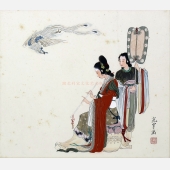 吴光宇
吴光宇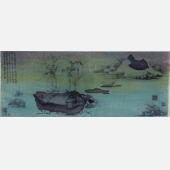 王霄
王霄 王轶琼
王轶琼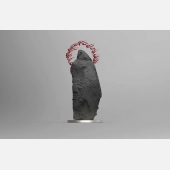 马文甲
马文甲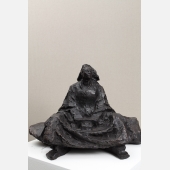 李秀勤
李秀勤 庞明璇
庞明璇 未知
未知 张大千
张大千